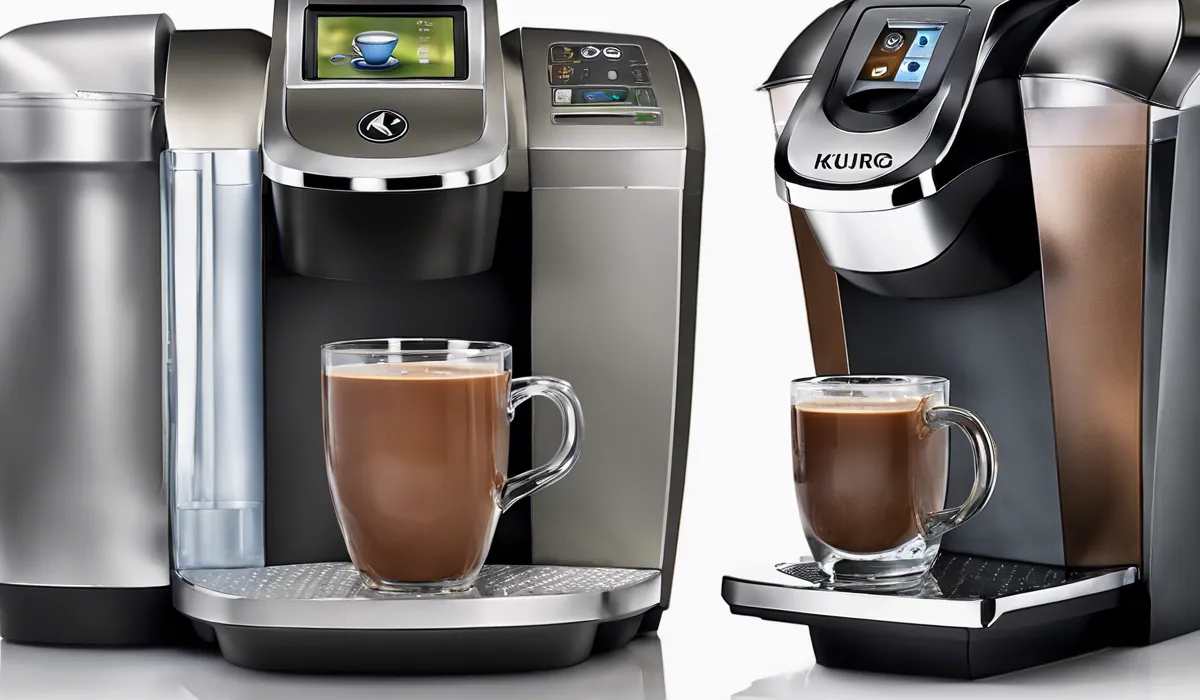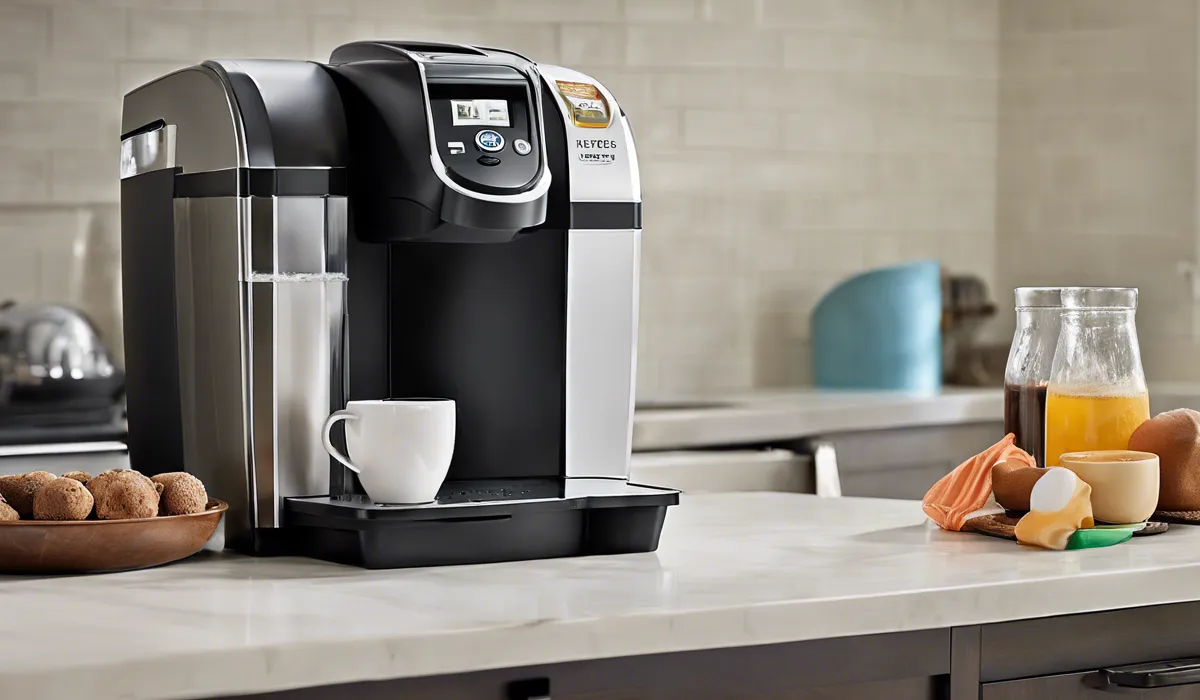Is Keurig Water Reservoir Dishwasher Safe? Find Out Here!
Most Keurig water reservoirs are not dishwasher safe. Refer to your specific model’s manual for cleaning instructions. Generally, it’s recommended to wash the reservoir by hand with soapy water, rinse thoroughly, and dry before reattaching it to the machine.
Understanding Keurig Water Reservoirs

Keurig Coffee Maker Varieties and Water Reservoirs
Keurig offers a diverse array of coffee makers, each designed with unique features to suit different preferences and lifestyles.
The Keurig Mini, for instance, boasts a compact form ideal for individuals or small spaces, whereas the Keurig Elite caters to a more robust user experience with its larger water reservoir.
The capacity of these reservoirs can range from a single cup’s worth to several, reducing the need for frequent refills and enhancing the convenience that Keurig machines are known for.
The Crucial Role of the Water Reservoir
The water reservoir is a critical component of the Keurig system. It stores the water that is eventually heated and passed through the K-Cup pod to brew your favorite beverage.
A well-functioning reservoir ensures that the machine operates efficiently, providing a consistent flow of water at the optimal temperature for brewing.
Construction Materials of Keurig Water Reservoirs
Keurig water reservoirs are predominantly made of plastic. This material is chosen for its durability, transparency, and the fact that it is typically BPA-free, ensuring that no harmful chemicals leach into the water.
Additionally, the clear plastic allows users to easily view the water level and monitor when a refill is necessary.
Dishwasher Safety of Keurig Water Reservoirs

Kitchen Appliance Dishwasher Safety Guidelines
When it comes to kitchen appliances, dishwasher safety is a feature many seek for convenience.
General guidelines suggest that only items labeled as dishwasher safe should be placed in the dishwasher. This is to avoid damage from high heat and harsh detergents, which can cause warping, melting, or degradation of materials.
Keurig’s Position on Dishwasher Safety
Keurig’s official stance is that most of their water reservoirs are not suitable for cleaning in a dishwasher.
This is due to the specific design and materials used which may not withstand the conditions within a dishwasher. Consequently, Keurig advises against placing the water reservoirs in a dishwasher to avoid potential damage.
Impact of Plastic Components on Dishwasher Safety
The dishwasher safety of plastic components is influenced by factors such as the type of plastic, the temperature of the water, and the harshness of the detergent.
High temperatures can cause the plastic to warp, while certain chemicals in detergents can make plastics brittle or cloudy.
Therefore, it’s essential to adhere to the manufacturer’s recommendations to maintain the integrity of the water reservoir.
Best Practices for Cleaning Keurig Water Reservoirs

Manual Cleaning: A Step-by-Step Guide
To manually clean a Keurig water reservoir, begin by removing it from the coffee maker.
Empty any remaining water and fill the reservoir with warm, soapy water. Use a soft cloth or sponge to gently scrub the inside, paying close attention to corners where residue might accumulate.
Rinse thoroughly with clean water several times to ensure all soap is removed. Finally, wipe down the exterior with a damp cloth and leave the reservoir to air dry completely before reassembling.
Maintaining a Clean Water Reservoir
Regular maintenance is vital to prevent mold and scale buildup in your Keurig water reservoir. It is recommended to clean the reservoir weekly and to use fresh water for each brew.
If you live in an area with hard water, consider using filtered or bottled water to minimize scale. Additionally, ensure the reservoir is dry before inserting it back into the coffee maker to hinder mold growth.
Keurig-Recommended Cleaning Methods and Products
Keurig recommends descaling your coffee maker every 3 to 6 months using their descaling solution or a mixture of white vinegar and water. This process removes calcium deposits that can affect machine performance.
Also, Keurig suggests using a non-abrasive, mild dish soap for cleaning the water reservoir. Avoid using harsh chemicals or scouring pads that could scratch or damage the reservoir’s surface.
In conclusion, while most Keurig water reservoirs are not designed for dishwasher use, they can be easily maintained with regular hand cleaning.
Following Keurig’s guidelines will ensure the longevity of your coffee maker and the quality of your brews. For a delightful experience every time, remember to clean and care for your Keurig water reservoir.
FAQs About Keurig Water Reservoir Dishwasher Safety
Can I put my Keurig water reservoir in the dishwasher?
Most Keurig water reservoirs are not dishwasher safe. You should refer to your specific model’s manual for cleaning instructions.
How should I clean my Keurig water reservoir?
Clean the reservoir by hand with soapy water, rinse thoroughly, and dry before reattaching it to the machine.
What happens if I put my Keurig water reservoir in the dishwasher?
Putting a non-dishwasher safe reservoir in the dishwasher can cause damage to the reservoir and potentially to the dishwasher.
Are any Keurig water reservoirs dishwasher safe?
Some specific models may have dishwasher-safe reservoirs. Check your model’s manual to confirm.
How often should I clean my Keurig water reservoir?
It is recommended to clean the water reservoir at least every two months or more often if used frequently.
Final Thoughts
Maintaining your Keurig involves hand washing the water reservoir, as most models are not suitable for dishwasher cleaning.
Always consult the manual for your particular Keurig model to follow specific care instructions.
A regular routine of washing the reservoir with soapy water, rinsing it well, and drying it before reattachment will help ensure the longevity and performance of your machine.
Useful Resources
- http://www.capstone.cse.msu.edu/2019-01/other-links/the-capstone-experience-lab/cuisinart-ss-700-single-serve-brewing-system.pdf
- https://www.cdc.gov/healthywater/emergency/dwa-comm-toolbox/before/tools/Fact-Sheet-About-What-to-Do-During-BWA-508.pdf
- https://u.osu.edu/keurigproject/phase-2-understanding-stakeholders-context-and-constraints/cognitive-walkthrough-of-a-keurig/





